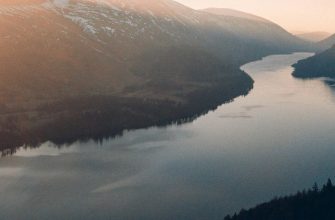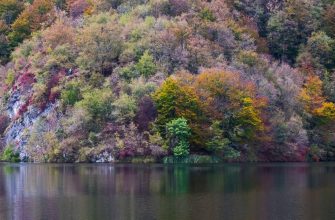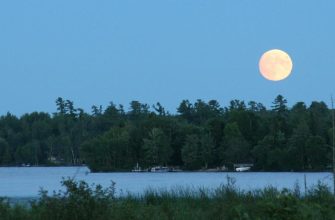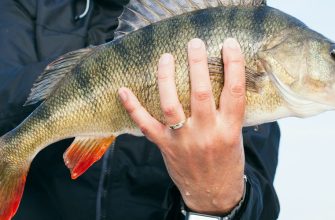- Great Lakes – Prime World’s Fishing Destinations
- Lake Superior
- Fishing Seasons
- What Can I Catch?
- Top Spots for Angling
- Tips for Catching More Fish
- Lake Huron
- Fishing Seasons
- What Can I Catch?
- Top Spots for Angling
- Tips for Catching More Fish
- Lake Michigan
- Fishing Seasons
- What Can I Catch?
- Top Spots for Angling
- Tips for Catching More Fish
- Lake Erie
- Fishing Seasons
- What Can I Catch?
- Top Spots for Angling
- Tips for Catching More Fish
- Lake Ontario
- Fishing Seasons
- What Can I Catch?
- Top Spots for Angling
- Tips for Catching More Fish
- Great Lakes Fishing Regulations
- Size and Bag Limits: Knowing the Rules for a Sustainable Catch
- Catch and Release Practices: Preserving the Future of Great Lakes Fisheries
- Licensing and Permits: Navigating the Legal Requirements
- Protected Species: Understanding the Conservation Efforts and Restrictions
- FAQs
- Q: What is the best time of year for fishing in America’s Great Lakes region?
- Q: What types of fish can be caught in America’s Great Lakes?
- Q: Can I go on a fishing charter in America’s Great Lakes region?
- Q: What fishing techniques are commonly used in this region?
- Q: What are the main types of bass found in the Great Lakes?
- Q: Where can I find the best bite for fishing in the Great Lakes?
- Q: What is the significance of the tributaries and streams in this region for fishing?
- Q: Are there any specific tips for catching fish in America’s Great Lakes during early fall?
- Q: Can I expect to catch big fish when fishing in America’s Great Lakes?
- Q: What type of fish are the lakers and why are they significant in this region?
Are you ready to embark on an unforgettable fishing adventure in America’s Great Lakes? Look no further! In this comprehensive guide, we will provide you with all the essential information you need to plan a successful fishing trip to this incredible region.
Throughout this article, we will explore the best fishing spots, techniques, and tips to help you make the most of your time on the water. Whether you are a seasoned angler or a beginner, we have got you covered!
Fishing in this region offers an abundance of opportunities to reel in some impressive catches. The Great Lakes are home to a wide variety of fish types, including bass, walleye, trout, and salmon. These prized fish can reach impressive sizes, with some weighing in at several pounds.

Before you embark on your fishing expedition, it’s important to gather reliable information to enhance your chances of success. In this guide, we will provide you with insider knowledge on the best fishing spots, the optimal time to visit, and the most effective techniques to maximize your catch. We want to ensure that your fishing experience in America’s Great Lakes is nothing short of extraordinary.
So, gear up and get ready to embark on an unforgettable fishing journey. Join us as we dive into the world of America’s Great Lake fishing, where every cast could be the one that lands you the catch of a lifetime. Let’s explore these lakes and make lasting memories.
Stay tuned for the upcoming sections where we will delve deeper into the specifics of fishing in America’s Great Lakes. Get ready to elevate your fishing game and make this fishing season your most successful one yet!
Great Lakes – Prime World’s Fishing Destinations
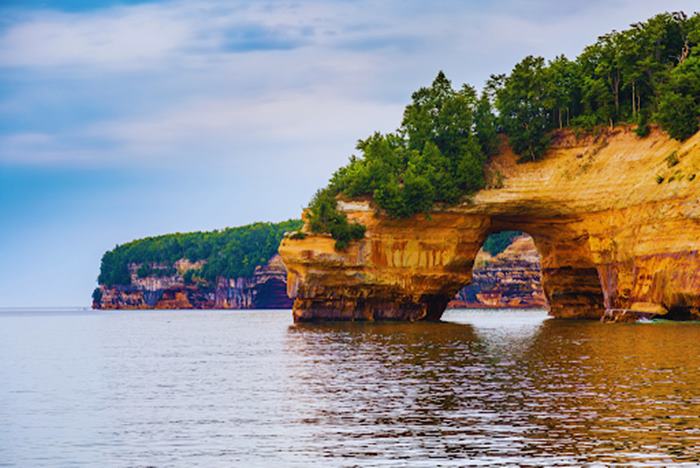
America’s Great Lakes offers some of the best fishing possibilities in the country. With their vast expanses of water, diverse fish types, and breathtaking natural beauty, these lakes attract fishers from near and far. In this article, we will explore why the Great Lakes are considered prime fishing locations and what makes them so special.
The Great Lakes, consisting of Lake Superior, Lake Michigan, Lake Huron, Lake Erie and Lake Ontario, boast an impressive variety of fish types. From the mighty Chinook salmon to the elusive lake trout, these lakes teem with abundant marine life. Fishes can also target popular game fish such as walleye, smallmouth bass, and northern pike. With such a diverse range of species, every fishing trip becomes an exciting adventure.
One of the key factors that make the Great Lakes prime fishing locations is their size. These vast lakes provide ample space for fishers to explore and find their perfect fishing spot. Whether you prefer casting your line from the shoreline or venturing out into deeper impoundments, the Great Lakes offers endless possibilities to test your skills and reel in a memorable catch.
In addition to the sheer size of the lakes, their unique geography contributes to their fishing allure. The Great Lakes are known for their diverse underwater structures, including rocky shoals, submerged reefs, and deep trenches. These features create ideal habitats for fish, offering ample shelter and feeding grounds. Exploring these underwater landscapes adds an element of excitement and mystery to the fishing experience.
Another reason why the Great Lakes are prime fishing destinations is the dedicated conservation efforts in place. Organizations such as the Great Lakes Fishery Commission work tirelessly to maintain healthy fish populations and preserve the delicate ecosystem of these lakes. This ensures that future generations can continue to enjoy the thrill of fishing in these pristine impoundments.
Lake Superior

America’s Lake Superior is located in the northern part of the United States, bordering the states of Minnesota, Wisconsin, Michigan, and the Canadian province of Ontario. It is the largest freshwater lake in the world by surface area, covering approximately 31,700 square miles. With a maximum depth of 1,332 feet, it is also one of the deepest lakes in North America.
Fishing Seasons
Fishing in Lake Superior is popular year-round, but the best seasons for fishing vary depending on the species you are targeting. Spring and early summer are known for excellent trout and salmon fishing, while late summer and fall offer possibilities for walleye, bass, and pike.
What Can I Catch?
Lake Superior is home to a diverse range of fish types. Fishers can find a variety of trout, including lake trout, brown trout, and rainbow trout. Salmons such as Chinook salmon and Coho salmon are also abundant in the lake. Other popular catches include walleye, smallmouth bass, northern pike, and muskellunge.
Top Spots for Angling
When it comes to fishing in Lake Superior, there are several top spots that fishers should consider. The Apostle Islands area is known for its productive fishing grounds, offering possibilities to catch trout, salmon, and walleye. The Keweenaw Peninsula in Michigan is another popular area, with its rocky shorelines providing an excellent habitat for smallmouth bass. The Duluth-Superior Harbor is also a hotspot for fishing, especially for walleye and lake trout.
Tips for Catching More Fish
To improve your chances of success when fishing in Lake Superior, consider the following tips:
- Research the specific regulations and fishing seasons for the species you plan to target.
- Use appropriate fishing gear and tackle for the type of fish you are pursuing.
- Pay attention to weather conditions, as they can affect fish behavior and feeding patterns.
- Experiment with different fishing techniques, such as trolling, casting, or jigging, to find what works best.
- Consult local bait and tackle shops for up-to-date information on fishing hotspots and bait preferences.
- Practice catch and release to help maintain the sustainability of the fishery.
Lake Huron
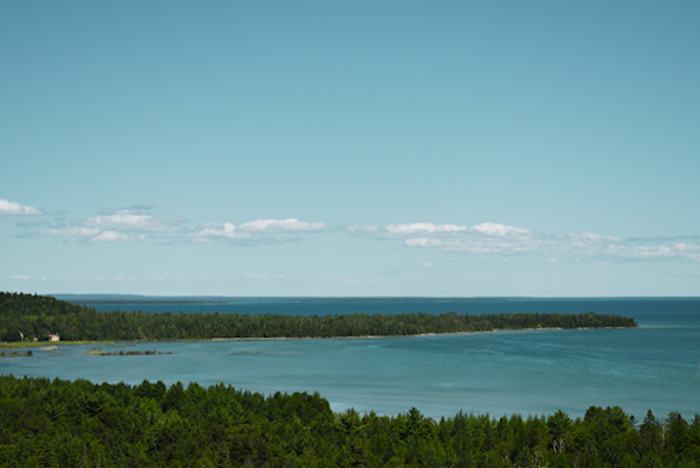
Lake Huron is one of the five Great Lakes of North America. It is located on the border between the United States and Canada. With a surface area of approximately 23,000 square miles, Lake Huron is the second-largest of the Great Lakes. It has an average depth of 195 feet, with its deepest point reaching approximately 750 feet.
Fishing Seasons
Fishing in Lake Huron can be enjoyed throughout the year, with different seasons offering unique possibilities. The fishing season typically starts in spring when the ice melts and extends into fall. During this time, fishers can target various fish types that thrive in the lake.
What Can I Catch?
Lake Huron is home to a diverse range of fish types, providing fishers with ample possibilities for a rewarding fishing experience. Some of the popular fish types found in the lake include:
- Smallmouth Bass: Known for their aggressive nature and acrobatic fights, smallmouth bass are a favorite among fishers in Lake Huron.
- Chinook Salmon: Lake Huron offers excellent salmon fishing, with chinook salmon being one of the prized catches. These powerful fish provide thrilling battles and are highly sought after.
- Lake Trout: Fishers catching in Lake Huron have the chance to catch lake trout, which are known for their strength and delicious taste.
- Walleye: Walleye fishing in Lake Huron is also popular, with these prized game fish providing exciting angling possibilities.
Read more: Lake Keowee Fishing Guide: Spots, Licenses, Tips – South Carolina
Top Spots for Angling
Lake Huron offers numerous top spots for fishers to explore. Some of the notable fishing locations include:
- Thunder Bay: Located on the eastern shore of Lake Huron, Thunder Bay is known for its diverse fish population, including walleye, smallmouth bass, and lake trout.
- Saginaw Bay: Situated on the western side of Lake Huron, Saginaw Bay is renowned for its exceptional walleye fishing. Fishers can also target other species like smallmouth bass and yellow perch.
- Georgian Bay: This eastern portion of Lake Huron offers breathtaking scenery and excellent fishing possibilities. Fishers can target a variety of species, including smallmouth bass, lake trout, and salmon.
Tips for Catching More Fish
To enhance your chances of success while fishing in Lake Huron, consider the following tips:
- Research and Plan: Familiarize yourself with the specific fishing regulations and seasons for different fish types in Lake Huron. Plan your fishing trips accordingly.
- Use Proper Equipment: Ensure you have the appropriate fishing gear and tackle for the species you intend to target.
- Locate Structure: Pay attention to underwater structures such as reefs, drop-offs, and weed beds, as they often attract fish.
- Experiment with Baits and Lures: Lake Huron offers a wide range of fishing opportunities, so be prepared to try different baits and lures to entice the fish.
- Stay Safe: Always prioritize safety while fishing. Wear a life jacket, be aware of changing weather conditions, and follow boating regulations.
Lake Michigan
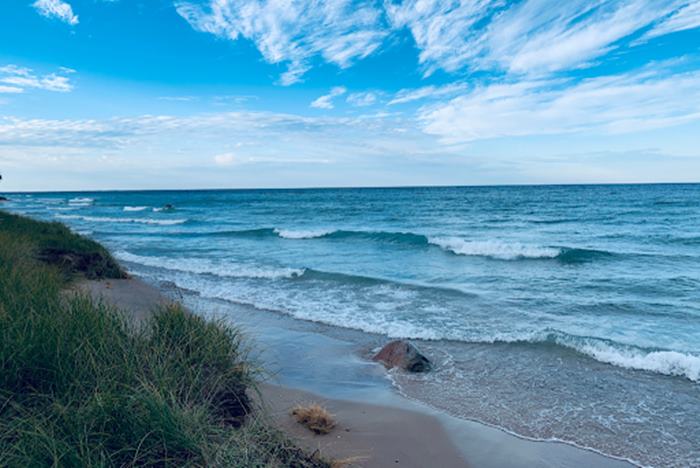
Lake Michigan is one of the five Great Lakes of North America. It is located entirely within the United States and is bordered by four states: Michigan, Indiana, Illinois, and Wisconsin. With a surface area of approximately 22,404 square miles, Lake Michigan is the second-largest of the Great Lakes by surface area. Its maximum depth reaches 923 feet.
Fishing Seasons
Lake Michigan offers fishing possibilities throughout the year. The fishing seasons can be categorized into different periods, each with its own target species and techniques.
- Spring: In spring, fishers can target species like Chinook salmon, coho salmon, lake trout, and brown trout. This is a popular time for trolling near the lake’s surface.
- Summer: Summer brings opportunities to catch a variety of types, including smallmouth bass, walleye, yellow perch, and steelhead. Fishers can employ techniques such as casting, jigging, and trolling.
- Fall: Fall is known as the prime time for salmon fishing. Chinook and coho salmon make their way back to the lake, providing exciting angling possibilities.
- Winter: Ice fishing is a popular activity during the winter months. Fishers can target species like yellow perch, steelhead, and lake trout.
What Can I Catch?
Lake Michigan is home to a diverse range of fish species. Some of the most sought-after species include:
- Chinook salmon
- Coho salmon
- Lake trout
- Brown trout
- Smallmouth bass
- Walleye
- Yellow perch
- Steelhead
These species provide fishers with thrilling fishing experiences and the possibility to catch trophy-sized fish.
Top Spots for Angling
Lake Michigan offers numerous top spots for fishers to explore. Here are some popular locations:
- Traverse City, Michigan: Known for its salmon fishing and beautiful scenery, Traverse City is a favored destination for fishers.
- Chicago, Illinois: The vibrant city of Chicago offers excellent fishing possibilities, with a variety of types to target.
- Milwaukee, Wisconsin: Milwaukee provides fishers with access to productive fishing grounds and stunning views of Lake Michigan.
- St. Joseph, Michigan: St. Joseph is renowned for its salmon fishing, especially during the fall season.
- Green Bay, Wisconsin: Green Bay offers fantastic angling possibilities for walleye, smallmouth bass, and perch.
Tips for Catching More Fish
To enhance your fishing experience and increase your chances of success in Lake Michigan, consider the following tips:
- Research: Learn about the specific species you plan to target, their behavior, and preferred habitats.
- Equipment: Use appropriate fishing gear and ensure it is in good condition. Consider the type of fishing you’ll be doing and choose the right rods, reels, and lines.
- Bait and Lures: Use bait and lures that are known to be effective for the target species. Experiment with different options to find what works best.
- Timing: Pay attention to seasonal patterns and the best times of day for fishing. Early morning and late afternoon are often productive.
- Location: Research and identify productive fishing spots, including reefs, drop-offs, and areas with underwater structures.
- Stay Informed: Keep up-to-date with fishing regulations, license requirements, and any specific rules for the areas you plan to fish.
- Safety: Prioritize safety by wearing appropriate gear, including life jackets, and being aware of weather conditions and potential hazards.
Lake Erie

Lake Erie is one of the five Great Lakes of North America and is located on the border between the United States and Canada. It is the fourth largest lake in terms of surface area and the shallowest among the Great Lakes, with an average depth of about 62 feet (19 meters). Lake Erie’s maximum depth reaches approximately 210 feet (64 meters).
Fishing Seasons
Lake Erie offers excellent angling possibilities throughout the year. The fishing seasons vary depending on the target fish and the preferred angling method. Here are some notable angling seasons in Lake Erie:
- Spring: Spring brings the walleye and yellow perch fishing seasons, which are highly popular among anglers. The warming temperatures attract these fish close to the shoreline, providing exciting angling experiences.
- Summer: During the summer months, Lake Erie becomes a prime angling spot for smallmouth bass. Anglers can also target fish like walleye, yellow perch, and steelhead trout during this season.
- Fall: Fall is known for its fantastic steelhead trout and walleye angling. The cooling temperatures trigger the migration of these fish, making it an excellent time to reel in some impressive catches.
- Winter: Ice fishing enthusiasts can enjoy the winter season on Lake Erie. Ice fishing for fish like yellow perch and walleye can be productive, especially when the lake is frozen and safe for angling.
What Can I Catch?
Lake Erie is teeming with a wide variety of fish. Some of the most sought-after catches include:
- Walleye: Lake Erie is renowned for its exceptional walleye fishery. Anglers flock to the lake to target this prized fish known for its delicious flavor and thrilling fights.
- Yellow Perch: The lake is also famous for its abundant yellow perch population. Anglers of all skill levels can enjoy catching these tasty fish, which are often found in schools near the shoreline.
- Smallmouth Bass: Lake Erie offers excellent possibilities for catching smallmouth bass. These feisty fighters are a favorite among fishers, known for their aggressive strikes and acrobatic jumps.
- Steelhead Trout: Steelhead trout, also known as steelies, are highly prized by fishers for their size and fighting spirit. These migratory fish provide an exhilarating challenge, especially during their spawning runs.
Top Spots for Angling
Lake Erie provides numerous top spots for angling enthusiasts. Here are some popular fishing locations:
- Western Basin: The western basin of Lake Erie, including areas near Toledo, Ohio, and Monroe, Michigan, is known for its exceptional walleye fishing. Anglers can find productive spots near reefs, shoals, and drop-offs.
- Eastern Basin: The eastern basin, including areas near Buffalo, New York, and Erie, Pennsylvania, offers fantastic smallmouth bass and steelhead trout angling. Anglers can explore rocky structures, deep holes, and river mouths for success.
- Islands Area: The Lake Erie Islands, including Put-in-Bay and Kelley’s Island, provide excellent angling possibilities. Anglers can target fish like walleye, yellow perch, and smallmouth bass while enjoying the scenic island views.
Tips for Catching More Fish
- Use the Right Gear: Ensure you have the appropriate fishing gear for the fish you are targeting. This includes rods, reels, lines, and lures specifically designed for the type of fish you aim to catch.
- Pay Attention to Weather and Water Conditions: Stay informed about weather forecasts, temperature and clarity. Fish are influenced by these factors, and understanding them can increase your chances of success.
- Learn from Local Guides and Anglers: Local knowledge is invaluable when fishing in Lake Erie. Seek advice from experienced guides and connect with fellow fishers to learn about proven techniques and productive angling spots.
- Experiment with Different Baits and Techniques: Fish in Lake Erie can be selective, so be prepared to try various bait presentations and fishing techniques. Adapt your approach based on the conditions and the behavior of the fish.
- Follow Fishing Regulations: Respect fishing regulations and size limits to ensure the sustainability of the fishery. Adhering to these guidelines helps preserve the fish population and ensures future angling possibilities.
Lake Ontario
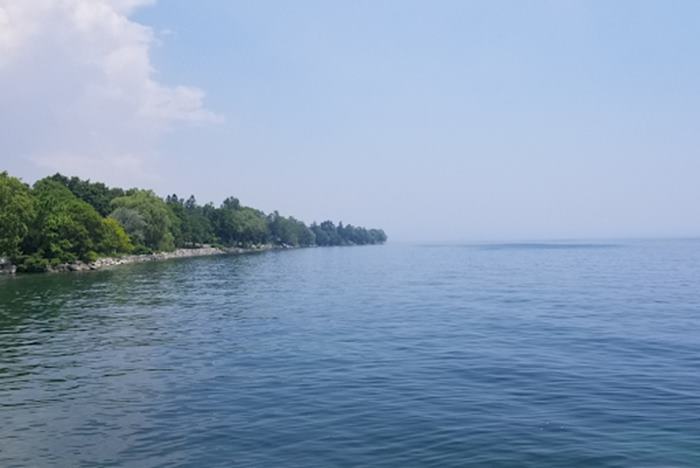
Lake Ontario is one of the five Great Lakes of North America. It is situated on the border between the United States and Canada, with the southern shore touching the state of New York. With a surface area of about 7,340 square miles, Lake Ontario is the 14th largest lake in the world by surface area. It is also the smallest among the Great Lakes in terms of surface area. The average depth of Lake Ontario is around 283 feet, with its maximum depth reaching approximately 802 feet.
Fishing Seasons
Fishing in Lake Ontario is a year-round activity, but the best seasons for particular types of fish vary. Here are the general fishing seasons for some popular fish:
- Salmon: Salmon fishing is most productive from April to June and again from September to October.
- Lake Trout: Lake trout can be caught throughout the year, but the best time is from May to July and September to October.
- Yellow Perch: Yellow perch fishing is excellent from May to June and again from September to October.
What Can I Catch?
Lake Ontario offers a diverse range of fish for fishers to target. Some of the popular fish include:
- Salmon: Chinook salmon (also known as king salmon) and coho salmon are abundant in Lake Ontario. These powerful fish provide thrilling fights for fishers.
- Lake Trout: Lake trout are known for their beautiful colors and strong fighting ability. They can grow to impressive sizes in Lake Ontario.
- Yellow Perch: Yellow perch is a favorite target for many fishers. They are abundant in the lake and provide delicious table fare.
Top Spots for Angling
Lake Ontario offers numerous top spots for angling. Here are some renowned locations:
- Oswego: Located in New York, Oswego is famous for its salmon and trout fishing. Anglers flock to the area to catch trophy-sized fish.
- Rochester: Rochester is another hotspot for salmon and trout fishing. The Genesee River, which flows through the city, provides excellent fishing possibilities.
- Kingston: On the Canadian side, Kingston offers fantastic fishing possibilities for salmon, trout, and other fish. The area is known for its scenic beauty and abundant fish populations.
Read more: Lake Murray Fishing Guide: Tips for Catch Fish in South Carolina
Tips for Catching More Fish
- Trolling Techniques: Trolling is a popular method for targeting salmon and trout in Lake Ontario. Use downriggers and planer boards to present your lures at different depths.
- Pay Attention to Temperature: Fish are sensitive to changes in temperature. Monitor the temperature and adjust your fishing tactics accordingly.
- Use Attractive Lures: Salmon and trout are attracted to flashy lures. Consider using spoons, flashers, and attractors to entice the fish.
- Fish Near Structures: Look for underwater structures such as drop-offs, reefs, and points. These areas often hold concentrations of fish.
- Stay Informed: Stay updated on fishing regulations, local reports, and weather conditions. This information can help you plan your fishing trips more effectively.
Great Lakes Fishing Regulations
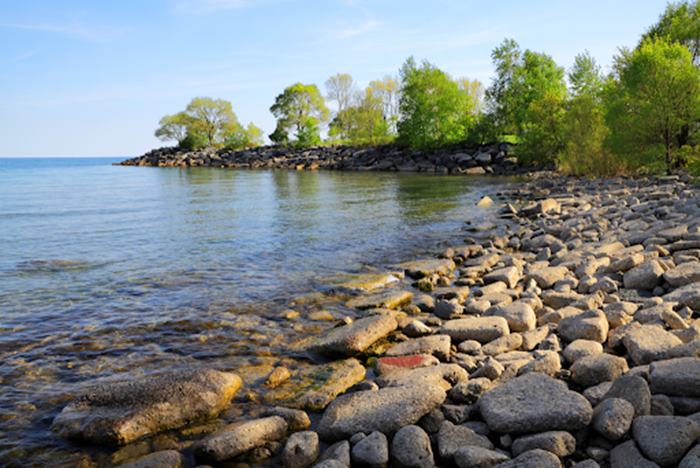
Size and Bag Limits: Knowing the Rules for a Sustainable Catch
When it comes to fishing in the Great Lakes, it’s important to understand and follow the size and bag limits set in place. These regulations aim to ensure the sustainability of the fisheries and maintain healthy fish populations for future generations of fishing enthusiasts to enjoy.
Each type of fish in the Great Lakes has its own specific size and bag limits, which determine the minimum and maximum sizes of fish that can be kept, as well as the number of fish that can be harvested per day. These limits help prevent overfishing and allow fish populations to thrive.
For example, let’s take a look at Lake Michigan’s regulations for two popular game fish: walleye and smallmouth bass. The current size limit for walleye is 15 inches, meaning any walleye caught below this size must be released. As for smallmouth bass, the size limit is set at 14 inches. Fishing enthusiasts should familiarize themselves with these limits and measure their catches accordingly.
By adhering to size and bag limits, fishing enthusiasts can participate in sustainable fishing practices, allowing fish populations to reproduce and grow, and ensuring healthy ecosystems in the Great Lakes.
Catch and Release Practices: Preserving the Future of Great Lakes Fisheries
Catch and release practices play a crucial role in preserving the future of Great Lakes fisheries. By releasing certain fish back into their natural habitat, fishers contribute to conservation efforts and help maintain the balance of the ecosystem.
When practicing catch and release, it’s important to handle the fish properly to minimize stress and increase their chances of survival. Here are a few tips to follow:
- Use barbless hooks or crimp the barbs to make it easier to release the fish.
- Minimize the time the fish is out of its natural habitat by keeping it submerged as much as possible.
- Avoid using a net unless necessary, as it can cause harm to the fish.
- Support the fish under its belly and gently remove the hook with appropriate tools.
- Release the fish back into its natural habitat gently, allowing it to swim away on its own.
By practicing catch and release, fishers contribute to the sustainability of the Great Lakes fisheries, ensuring future generations can continue to enjoy the thrill of fishing.
Licensing and Permits: Navigating the Legal Requirements
Before heading out to fish in the Great Lakes, it’s essential to understand and comply with the licensing and permit requirements. Each state surrounding the Great Lakes has its own specific regulations, so individuals must familiarize themselves with the rules of the state they plan to fish in.
Typically, a fishing license is required for anyone aged 16 and older. Licenses can be obtained online or from authorized retailers. Additionally, some states may have additional permits or stamps needed for specific types of fishing, such as salmon or trout fishing.
It’s important to carry the appropriate licenses and permits while fishing and be prepared to present them if requested by law enforcement. By obtaining the necessary licenses and permits, individuals demonstrate their commitment to responsible and legal fishing practices.
Protected Species: Understanding the Conservation Efforts and Restrictions
The Great Lakes are home to a variety of fish, including some that are protected due to conservation efforts. It’s important for fishing enthusiasts to understand these protected fish and the restrictions that come with them.
One such example is the lake sturgeon, a type of fish that has faced significant population declines in the past. Lake sturgeon are now protected and catch-and-release is the only permissible method for fishing them in many areas. By adhering to these regulations, fishing enthusiasts can contribute to the conservation of this magnificent fish.
Other protected fish in the Great Lakes include various types of trout and salmon, which have specific regulations regarding size limits, bag limits, and fishing seasons. Fishing enthusiasts should consult the local fishing authorities or resources for up-to-date information on these protected fish.
Understanding the importance of protecting and conserving these fish ensures the long-term health and sustainability of the Great Lakes fisheries.
Remember, by following the size and bag limits, practicing catch and release, obtaining the necessary licenses and permits, and respecting protected fish, fishing enthusiasts can enjoy a fulfilling and responsible fishing experience in the Great Lakes.
Disclaimer: The information provided in this article is based on reliable sources and research. It is always recommended to refer to official fishing regulations and local authorities for the most up-to-date information
FAQs
Q: What is the best time of year for fishing in America’s Great Lakes region?
A: The spring and fall offer incredible fishing opportunities in this region, with good numbers of lakers, smallmouth and largemouth bass as well as trophy fish available.
Q: What types of fish can be caught in America’s Great Lakes?
A: The Great Lakes are home to an abundance of fish species including lakers, smallmouth and largemouth bass, Atlantic salmon, brook trout, whitefish, and cohos, among others.
Q: Can I go on a fishing charter in America’s Great Lakes region?
A: Yes, many captains in this area also offer fishing charters which promise a great fishing experience for both seasoned anglers and beginners.
Q: What fishing techniques are commonly used in this region?
A: Fly fishing, beach fishing, nearshore fishing, and participating in bass tournaments are popular techniques used by fishermen in America’s Great Lakes region.
Q: What are the main types of bass found in the Great Lakes?
A: The main types of bass found in the Great Lakes are largemouth and smallmouth bass, with smallies being especially prevalent and promising a good fight.
Q: Where can I find the best bite for fishing in the Great Lakes?
A: The late fall is when the big fish come nearshore to feed, providing the best bite and a chance to catch some trophy-size fish.
Q: What is the significance of the tributaries and streams in this region for fishing?
A: The tributaries and streams hold great significance as they are the spawning grounds for many species, especially for the Atlantic salmon and the cohos.
Q: Are there any specific tips for catching fish in America’s Great Lakes during early fall?
A: During early fall, the fish roam in good numbers near the tributaries and the shoreline, making it a promising time to catch them using various fishing techniques.
Q: Can I expect to catch big fish when fishing in America’s Great Lakes?
A: Yes, the Great Lakes are known for their trophy-size fish, promising a great fishing experience where you won’t be disappointed with the catch.
Q: What type of fish are the lakers and why are they significant in this region?
A: The lakers, also known as lake trout, are silvery fish that dwindle in numbers, but they offer a glory catch among the fisherman in the region due to their size and significance.

